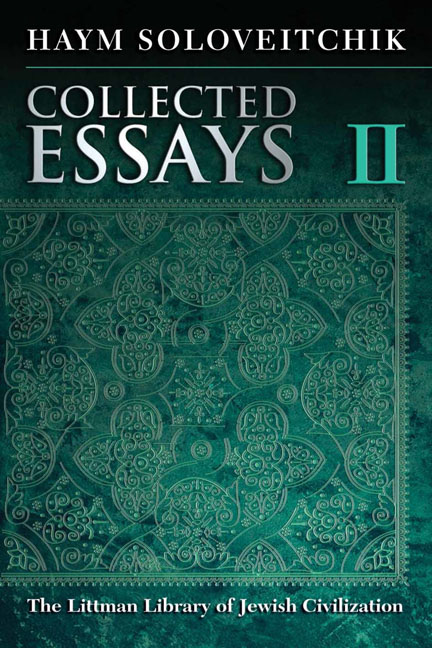Book contents
- Frontmatter
- Dedication
- Preface
- Acknowledgments
- Contents
- Note on Transliteration and Conventions Used in the Text
- PART I RE-EVALUATION OF ELEVENTH-CENTURY ASHKENAZ
- PART II MARTYRDOM UNDER CROSS AND CRESCENT INTRODUCTION
- PART III MISHNEH TORAH
- Bibliography of Manuscripts
- Source Acknowledgments
- Index of Names
- Index of Places
- Index of Subjects
15 - Mishneh Torah: Polemic and Art
- Frontmatter
- Dedication
- Preface
- Acknowledgments
- Contents
- Note on Transliteration and Conventions Used in the Text
- PART I RE-EVALUATION OF ELEVENTH-CENTURY ASHKENAZ
- PART II MARTYRDOM UNDER CROSS AND CRESCENT INTRODUCTION
- PART III MISHNEH TORAH
- Bibliography of Manuscripts
- Source Acknowledgments
- Index of Names
- Index of Places
- Index of Subjects
Summary
|327|
SEVERAL YEARS AGO I raised questions about the organization of Mishneh Torah and argued that, as great a classifier as Maimonides was, there are nevertheless serious problems in the structure and distribution of topics in the Yad ha- Ḥazakah, as Mishneh Torah is alternatively called,that have hitherto gone unnoticed. I further suggested that more would be achieved in the way of appreciation of his code by critical enquiry than by panegyric, especially as Maimonides was scarcely in need of our praise. I would like to practice here what I preached there: suggest a solution to one of the difficulties that I raised and then attempt to see whether its resolution yields any deeper insights into the nature of Mishneh Torah.
Let me restate one of the points I raised in that article. The structure of ‘Hilkhot Shabbat’ is deeply problematic. In the great first chapter Maimonides lays down the definition of a melakhah—the characteristics deemed necessary for any act to be classified as one of the thirty-nine avot melakhot (archetypal acts of labor forbidden on the Sabbath). This chapter, which, in its scope and synthetic power bears Maimonides’ inimitable stamp, would naturally lead one to expect that he would promptly begin itemizing and detailing the thirtynine avot melakhot. No such thing, however, occurs. He proceeds to dedicate the second chapter to violating the Sabbath so as to save a human life (pikuah. nefesh). One could yet argue, though I would not, that he has a philosophical purpose in mind—to emphasize at the outset the nigh-supreme value placed by Jewish law on human life, for its preservation prevails even over Sabbath observance, the injunction about which is only somewhat less stringent than that prohibiting idolatry. However, he proceeds to a further detour by presenting in the next two chapters the laws of placing food on the fire before the Sabbath and having it cook on the Sabbath (shehiyah, ḥazarah, and hatmanah). How can one discuss the laws regulating the |328| covering of the stove if one hasn't spelled out beforehand the injunction against cooking or that of muktseh (objects which may not be moved on the Sabbath)? Following this, he details the laws of lighting candles on Friday towards sundown.
- Type
- Chapter
- Information
- Collected EssaysVolume II, pp. 378 - 396Publisher: Liverpool University PressPrint publication year: 2014

